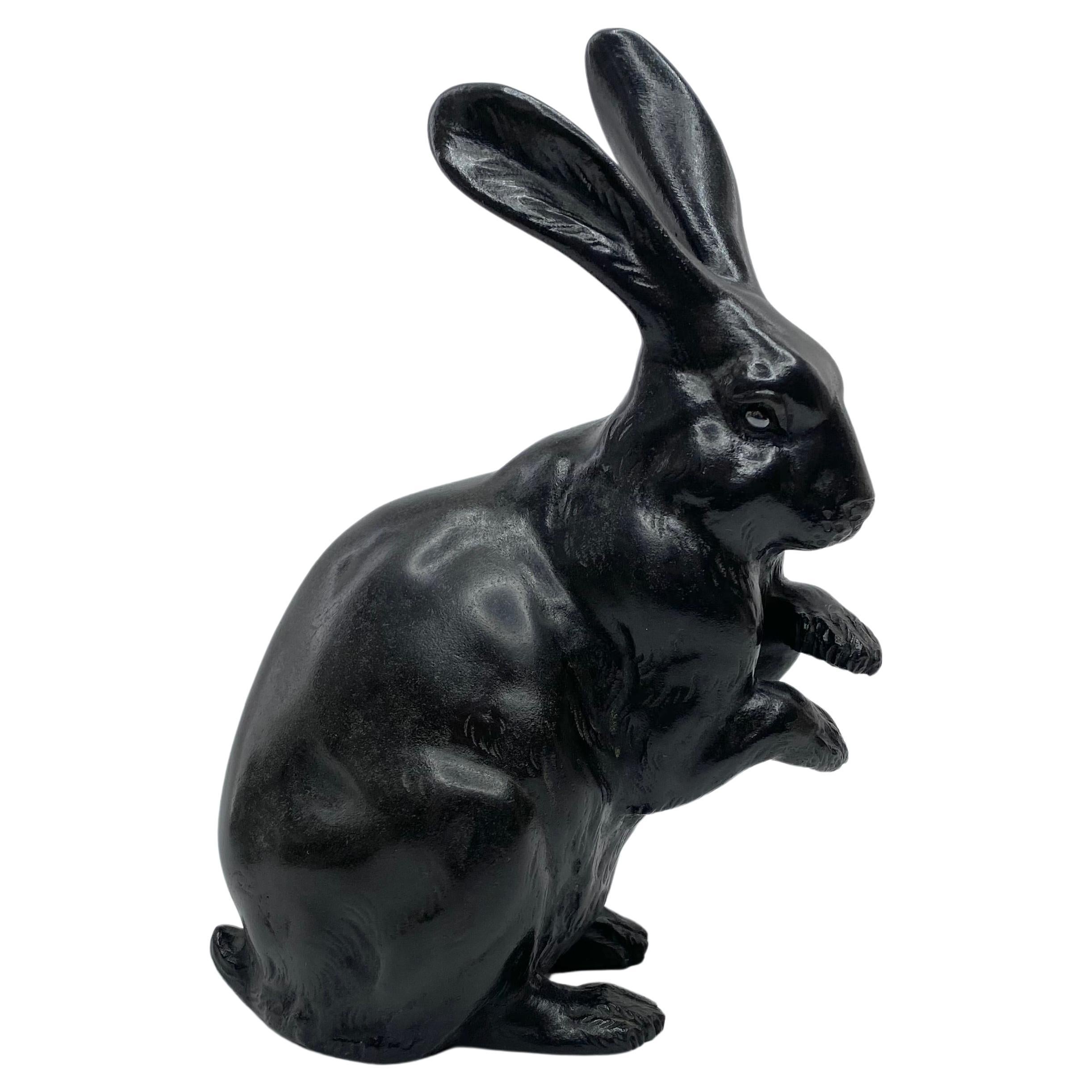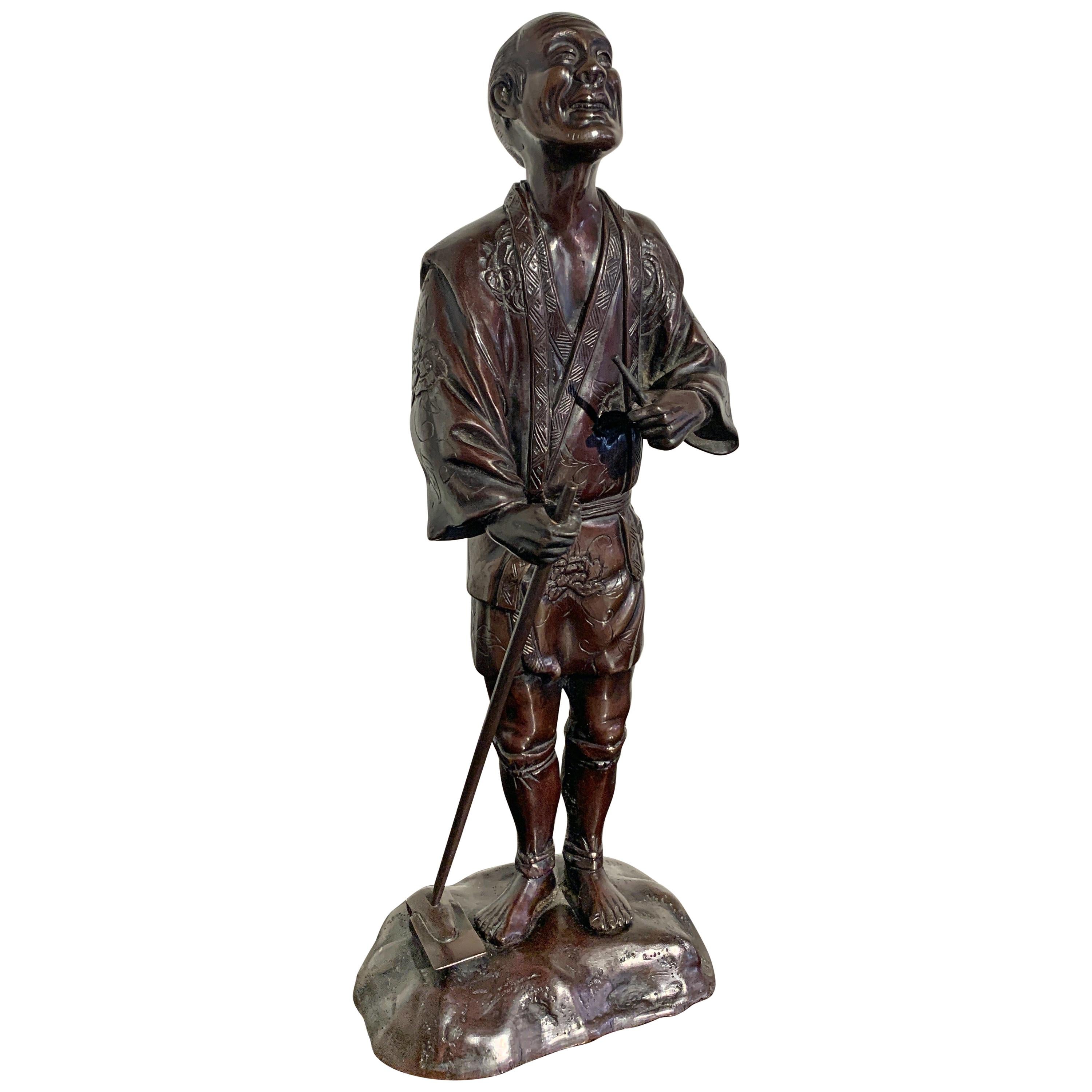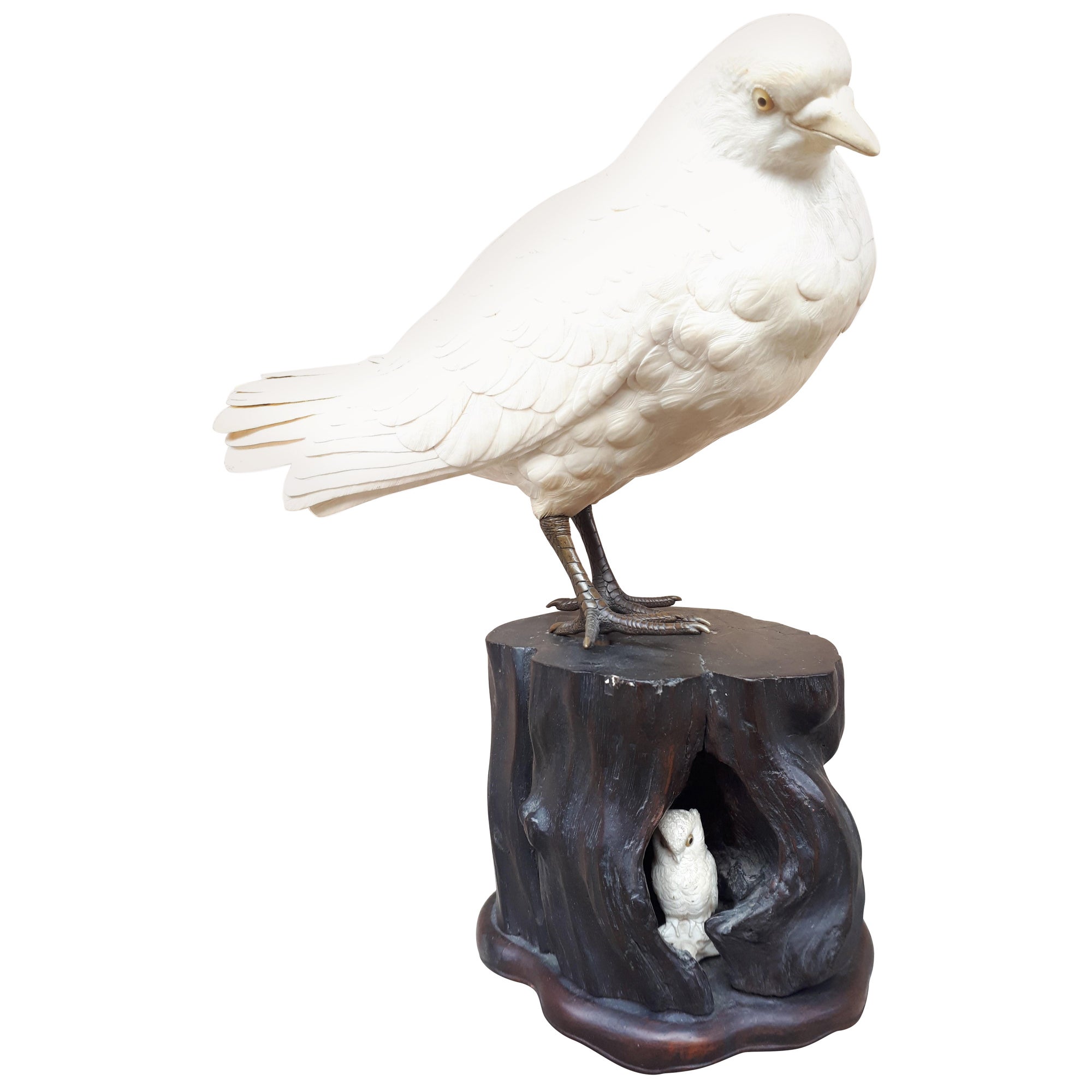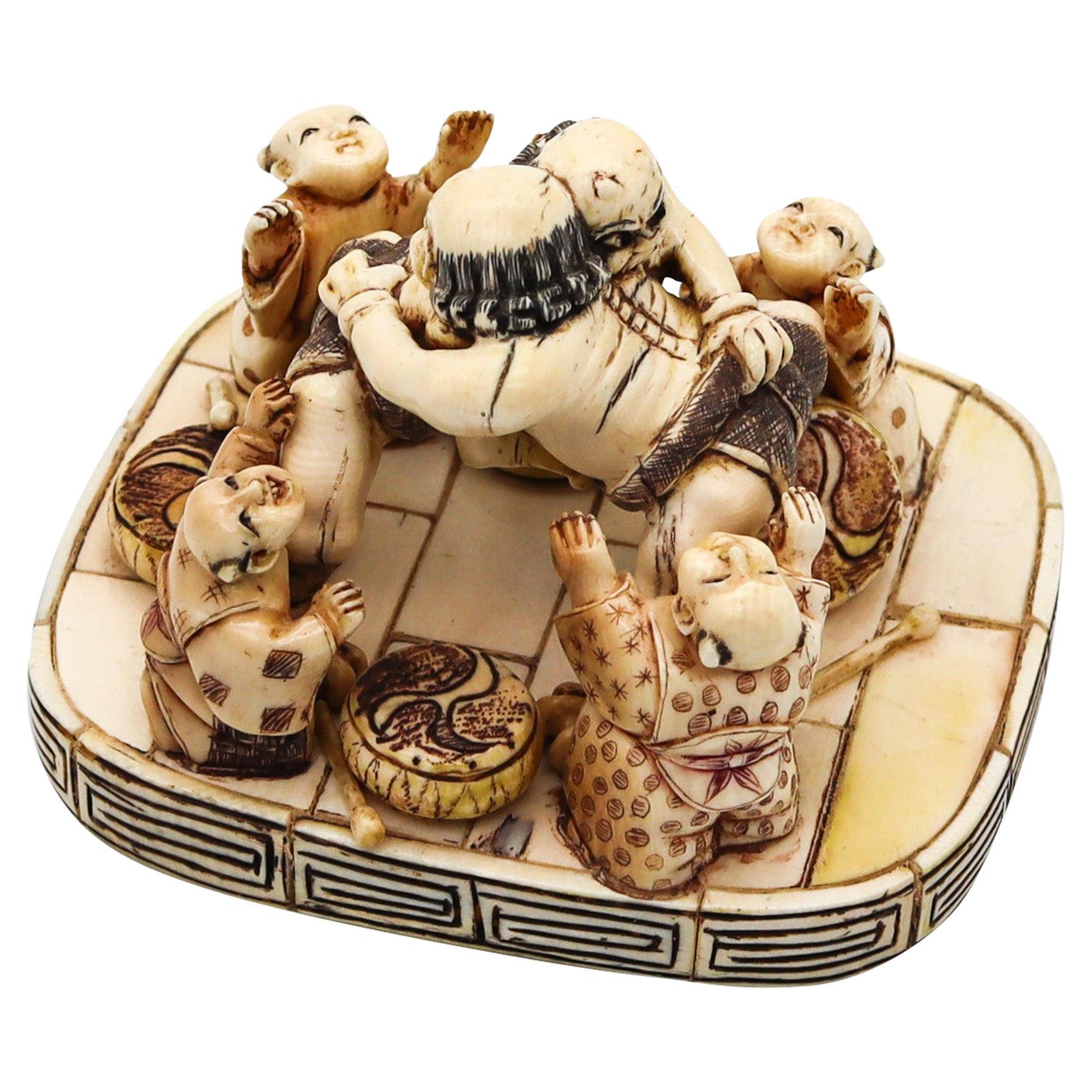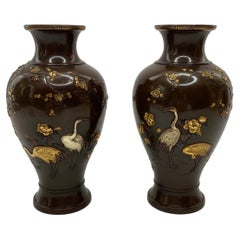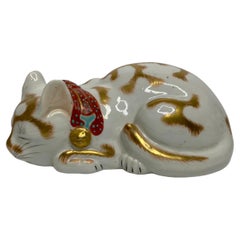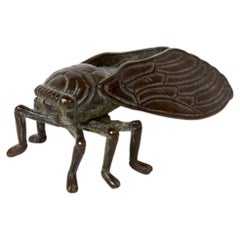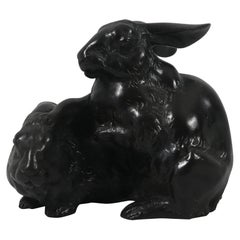
Japanese Bronze Rabbits Okimono, Okazaki Sessei, Meiji Period
View Similar Items
Want more images or videos?
Request additional images or videos from the seller
1 of 13
Japanese Bronze Rabbits Okimono, Okazaki Sessei, Meiji Period
About the Item
- Creator:Okazaki Sessei (Metalworker)
- Dimensions:Height: 5.12 in (13 cm)Width: 5.71 in (14.5 cm)Depth: 3.94 in (10 cm)
- Style:Meiji (Of the Period)
- Materials and Techniques:Bronze,Cast
- Place of Origin:
- Period:1900-1909
- Date of Manufacture:circa 1900
- Condition:
- Seller Location:Gargrave, GB
- Reference Number:1stDibs: LU4397117867681
About the Seller
5.0
Vetted Seller
These experienced sellers undergo a comprehensive evaluation by our team of in-house experts.
Established in 1982
1stDibs seller since 2019
45 sales on 1stDibs
Typical response time: 1 hour
More From This SellerView All
- Japanese bronze and mixed metal vases, Inoue of Kyoto, Meiji Period.By Inoue ManjiLocated in Gargrave, North YorkshireA fine pair of Japanese bronze and mixed metal vases, by Inoue of Kyoto, Meiji Period. The baluster shaped vases, decorated in gold, silver and shakudo inlay, with cranes beneath flo...Category
Antique 1890s Japanese Meiji Metalwork
MaterialsBronze
- Kutani porcelain cat, Japan, c. 1900, Meiji Period.By Kutani StudioLocated in Gargrave, North YorkshireKutani porcelain okimono of a cat, c. 1900. Meiji Period. £490.00 Kutani porcelain okimono, Japan, c. 1900. Meiji Period. Finely modelled as a sleeping cat, its hair delineated in g...Category
Antique 1890s Japanese Meiji Ceramics
MaterialsPorcelain
- Kutani porcelain Green Pheasant, Japan, Meiji Period.By Kutani StudioLocated in Gargrave, North YorkshireKutani porcelain okimono of a Japanese Green Pheasant, Japan, Meiji Period. The pheasant modelled, perched upon a large gnarled branch. Decorated in typically vibrant enamels, and he...Category
Antique Early 1900s Japanese Meiji Ceramics
MaterialsPorcelain
- Imari porcelain gourd shape, Arita, Japan, Meiji Period.By Imari PorcelainLocated in Gargrave, North YorkshireImari porcelain gourd shaped dish, Arita, Japan, c. 1890, Meiji Period. The unusual gourd shaped dish, hand painted in typical Imari colours, with panels of birds flying amongst plan...Category
Antique 1880s Japanese Meiji Porcelain
MaterialsPorcelain
- Imari ‘Black Ship’ bowl and cover, Japan, Meiji Period.By Imari PorcelainLocated in Gargrave, North YorkshireA Japanese Imari porcelain ‘Black Ship’ bowl and cover, Meiji Period. The bowl hand painted to one side with a large sailing ship with Dutch flags, whilst t...Category
Antique 19th Century Japanese Meiji Ceramics
MaterialsPorcelain
- Sumidagawa pottery Monkeys vase, Ban-Ni, Japan, Meiji Period.By Sumida GawaLocated in Gargrave, North YorkshireSumidagawa ‘Monkeys’ vase, Ban-Ni, Japan, c. 1890, Meiji Period. £1,350.00 Sumidagawa pottery vase, signed Ban-Ni, Japan, c. 1890, Meiji Period. The large vase, sculpted with an amu...Category
Antique 1890s Japanese Meiji Ceramics
MaterialsPottery
You May Also LikeView All
- Japanese Meiji Period Carved Wood Okimono Man with RabbitsLocated in Newark, EnglandThe charming figure, carved from a single piece of wood is exceptionally carved showing the male figure with humorous expression holding two Rabbits one by the ears and the second under his arm. A third Rabbit stands at the feet of the male looking up, each rabbit with a different expression. The male figure is wearing traditional Japanese attire with his hair tied back stood upon a naturalistic base. The figure dates to the Meiji Period (1868-1912) circa 1900. Notes The Rabbit is one of the 12 animals to feature in the Japanese Zodiac signs which follows the Chinese astrological system along with the Rat, Ox, Tiger, Rabbit, Dragon, Snake, Horse, Goat, Monkey, Rooster, Dog, Pig. Such division is connected with the Jupiter cycle around the Sun, which lasts about 12 years. As 2023 is the year of the Rabbit...Category
Antique Early 1900s Japanese Meiji Sculptures and Carvings
MaterialsWood
- Japanese Tokyo School Bronze Okimono of a Farmer, Meiji PeriodLocated in Austin, TXA very fine and detailed Tokyo School cast bronze okimono (decorative sculpture) of a smiling farmer, Meiji period, late 19th century, Japan. The e...Category
Antique Late 19th Century Japanese Meiji Sculptures and Carvings
MaterialsBronze
- Japan bronze cicada sculpture okimono MeijiLocated in PARIS, FRBronze sculpture with dark brown patina of a cicada. The cicada (in Japanese, semi) is considered as a symbol of humanity. Together with a praying mantis and a spider, they represen...Category
Antique Late 19th Century Japanese Japonisme Sculptures and Carvings
MaterialsBronze
- Okimono - Bronze Sculpture By Kakuha Kanzaemon, Japan Meiji EraLocated in Saverne, Grand EstSuperb bronze okimono with black patina representing a peasant resting after his work, a basket of vegetables at his feet. Signed Kakuha Sei on the wooden stump. Excellent quality ! ...Category
Antique Late 19th Century Japanese Meiji Sculptures and Carvings
MaterialsBronze
- Ivory Okimono by Kofu, Japan Meiji eraLocated in Saverne, Grand EstRare okimono carved in the thickness of an elephant tusk depicting a life-size pigeon. It stands on a hollow trunk, inside which hides an owl. A small 4mm...Category
Antique 1880s Japanese Meiji Sculptures and Carvings
MaterialsIvory
- Japan 1890 Meiji Period Signed Okimono Sculpture of a Group of Skeletons SmokingLocated in Miami, FLSculptural signed Okimono from the Japanese Meiji period (1868-1912). Very rare, unusual and large sculptural assembling of a dysplaying piece of okimono. Created in Japan during the imperial period of the Meiji (1868-1912). This extraordinary okimono was carefully carved depicting a group of three intricately and realistically rendered carousing skeletons (Gaikotsu) in relax and resting position, drinking and smoking. Two of them, probably males representations are resting on a wicker sofa. The third, is a woman seated in a lower stool offering drinking cups of sake on a round tray. A small rectangular bench is arranged in the scene. The composition is displayed on a four-legged carved wood platform with an inlaid red plaque engraved with the artist's signature. The level of detail and the quality of the carving is truly exceptional. Has an exact measurements of 209.55 mm by 196.85 mm by 127.76 mm (8.25 x 7.75 x 5.03 Inches). After an extensive collection of data, comparables and references to this piece, we have only been able to find only three okimono sculptures like this with similar themes and the same quality of work. References Note: A similar carving of four skeletons playing an animated game of dominos, signed Shutaro in an inlaid rectangular red plaque, was sold in London by Christie’s South Kensington in October 14 2014, Lot 120 Sale 5546. References Note: A similar carving with four skeletons in an otherwise typical victorian scene of a photographer and three sitters signed Shutaro in an inlaid rectangular red plaque, was sold in Edinburgh at Lyon & Turnbull in November 7, 2018. References Note: A similar carving with five skeletons seated, playing cards and drinking, was sold in London by John Nicholson Fine Art on September 26, 2018. Meiji period, is an era of Japanese history that extended from October 23, 1868 to July 30, 1912. The Meiji era was the first half of the Empire of Japan, when the Japanese people moved from being an isolated feudal society at risk of colonization by Western powers to the new paradigm of a modern, industrialized nation state and emergent great power, influenced by Western scientific, technological, philosophical, political, legal, and aesthetic ideas. As a result of such wholesale adoption of radically different ideas, the changes to Japan were profound, and affected its social structure, internal politics, economy, military, and foreign relations. The period corresponded to the reign of Emperor Meiji. It was preceded by the Keio era and was succeeded by the Taisho era, upon the accession of Emperor Taisho. Okimono, is a Japanese term meaning for display an ornament; art object; or decorative object, usually displayed in a tokonoma or butsudan "Buddhist altar". It is an ornament or figure, especially one placed in a guest room. An okimono may be a small Japanese...Category
Antique 1890s Japanese Meiji Sculptures and Carvings
MaterialsWood
Recently Viewed
View AllMore Ways To Browse
1 Gold No Reserve
Cast Rabbit
Cast Bronze Rabbit
Japanese Bronze Rabbits
Japanese Rabbit Sculpture
Japanese Cast Bronze Rabbit
Antique Bronze Rabbit
Meiji Okimono
Rabbit Carving
Antique Wooden Doors Pakistan
Awa Odori
Celadon Statue
Guanyin With Child
Indonesia Stone Wheel
Jade Kwan Yin
Noh Okina
Venini Vignelli Neon
Vishnu Garuda Statue
